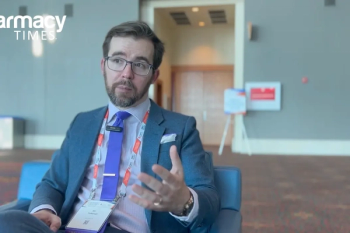
Rheumatoid Arthritis Paitents Unsuccessful on Methotrexate Achieve Surprising Results with Sarilumab
Sarilumab shows promise on circulating biomarkers of bone and joint destruction in patients with rheumatoid arthritis who had shown an inadequate response to methotrexate.
Cem Gabay, MD, Professor of Medicine at the University of Geneva, presented results of a study on the use of sarilumab on circulating biomarkers of bone and joint destruction in patients with rheumatoid arthritis who had shown an inadequate response to methotrexate.
By way of background, he stated that researchers know that synovial inflammation leads to bone damage. There is also a cascade of signaling events that contribute to this damage.
In addition, he said that more recently, different synovial phenotypes have shown different responses to biologic agents.
He briefly explained the study’s methodology, which included biomarkers measured using validated ELISAs; randomly selected subsets of patients receiving different amounts of a drug; and evaluating changes (modest differences in some biomarker levels) in patients classified as ACL responders and non-ACL responders at 6 months.
Among his findings were that Sarilumab reduced disease activity and improved physical function—all superior to Methotrexate alone.
He presented baseline demographics and disease characteristics, noting that older patients were included. But the baseline characteristics were basically similar. Further, the baseline serum levels of most of the biomarkers were similar—even quite comparable—between treatment groups.
Some of these reductions could be seen as early as two weeks after just one injection, suggesting a subset of the biomarkers may be associated with a decrease in disease activity.
Specifically, sarilumab:
- Significantly reduced serum concentrations of CRP compared with placebos at all time points in the evaluation.
- Significantly increased a marker of bone formation and decreased a marker of bone resorption.
- Significantly decreased markers of synovial inflammation and tissue remodeling—a rapid reduction at week 2 and again at week 24.
- Significantly decreased CLM, a marker of collagen type 1 description.
The study showed that patients using sarilumab showed a significantly higher magnitude of change in biomarkers of inflammation and bone or joint degradation—as compared to patients treated with Methotrexate. Further, for some of these markers, the difference was observed as early as two weeks after treatment began.
A stronger way to put this was: sarilumab significantly reduced biomarkers of synovial inflammation and bone remodeling.
What this means, explained Gabay, was that clinicians learned which biomarkers to follow concerning the response of patients to this drug.
While he was not surprised at the results of using Sarilumab, he was surprised at the speed with which they were produced—that the medication worked as quickly as two weeks. The results he displayed for CRP were well known, he said, but for other markers of synovial inflammation, it was, he pointed out, a good surprise that the changes occurred so quickly.
Newsletter
Stay informed on drug updates, treatment guidelines, and pharmacy practice trends—subscribe to Pharmacy Times for weekly clinical insights.













































































































































































































